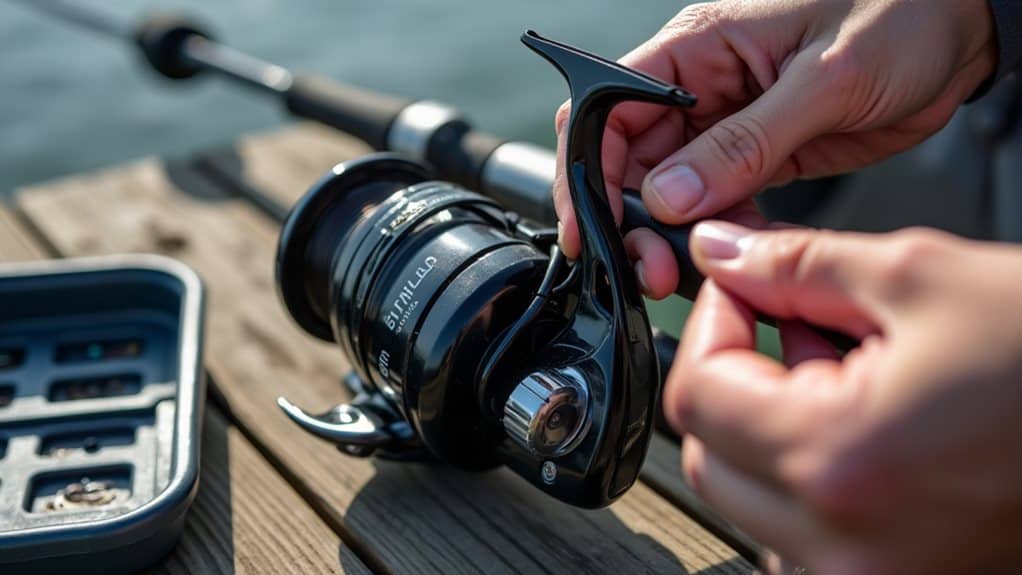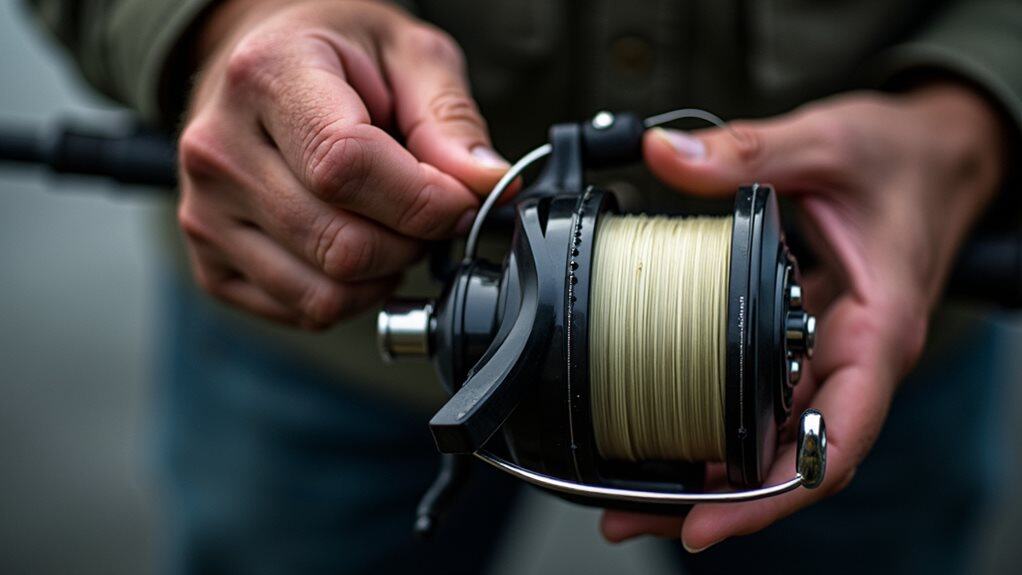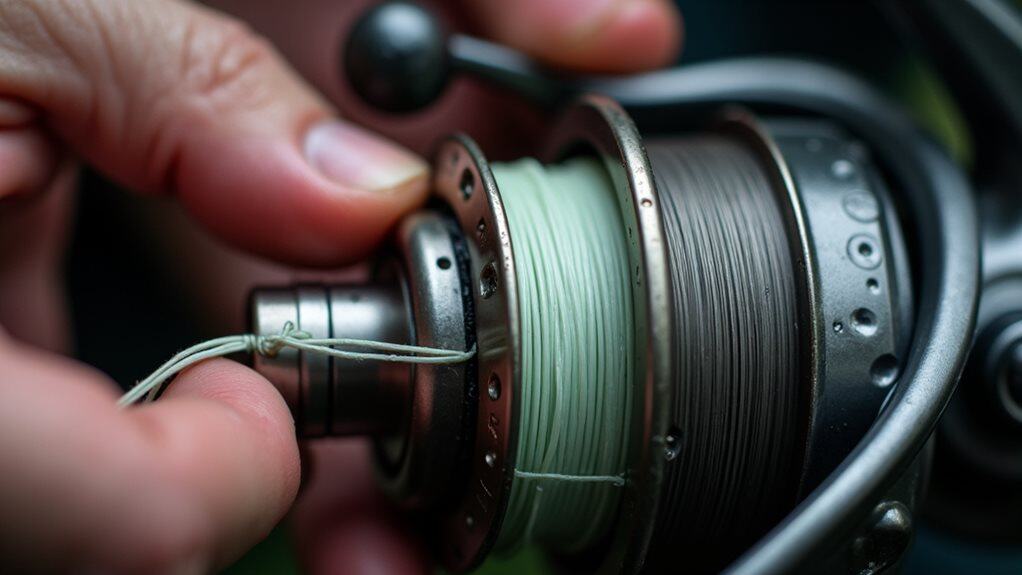Start by threading your line through the rod’s first guide and the reel’s level wind from front to back. Secure the line to your baitcaster’s spool using an Arbor Knot—wrap the tag end around the standing line, then create two overhand knots for maximum security. While spooling, position your filler spool horizontally and maintain consistent thumb tension to guarantee even distribution across the reel. The steps below reveal advanced techniques that’ll enhance your baitcasting performance.
TLDR
- Thread line through the rod’s first guide and pass it through the reel’s level wind from front to back.
- Secure line to the spool using an Arbor Knot with two overhand knots to prevent slippage during casting.
- Position filler spool horizontally and maintain consistent thumb tension while reeling to ensure even line distribution.
- Choose monofilament for beginners or braided line with monofilament backing for experienced anglers seeking strength and sensitivity.
- Adjust brake system and spool tension knob settings, then conduct practice casts to fine-tune reel performance.
Essential Preparation and Equipment Setup

Before you begin spooling line onto your baitcaster reel, selecting the appropriate fishing line forms the foundation of successful setup and performance.
Choose monofilament for easier handling as a beginner, or braided line for increased strength and sensitivity. Many anglers prefer high-resolution displays for better visibility when fishing, which can complement the use of quality line.
Match your line weight to your lure and rod rating, ensuring ideal casting distance while minimizing backlash risks during operation. When using braided line, always add monofilament backing first to create necessary friction and prevent slippage on the spool.
Threading and Positioning Your Fishing Line
Once you’ve selected your line and gathered your equipment, proper threading techniques will determine how smoothly your baitcaster performs on the water.
Start by threading the line through the rod’s first guide near the handle, then pass it through the reel’s level wind from front to back. Selecting the right size swivel is also crucial for maintaining line integrity and preventing tangles.
Pull excess line through to prevent slipping. For easier handling during the spooling process, consider using a two-piece rod which provides better management and control while threading your line.
Mastering the Arbor Knot for Secure Attachment

While threading your line through the guides represents the first step, fastening it properly to your baitcaster’s spool requires mastering the Arbor Knot—a fundamental technique that’ll prevent costly line slippage and guarantee reliable performance on the water. A well-organized tackle box can further enhance your fishing experience by ensuring that all necessary gear is readily accessible. You’ll create two overhand knots: one on the tag end, then wrap around the standing line before forming a second knot through the loop.
Proper Spooling Techniques and Tension Control
With your line securely attached to the spool via the arbor knot, you’ll need to focus on proper spooling technique to confirm peak performance and prevent casting problems down the line.
Position the filler spool horizontally so line feeds from the top, maintaining consistent tension with your thumb while reeling steadily to confirm even distribution across the spool. Additionally, applying steady tension while spooling is crucial to prevent line dig-in and ensure optimal performance.
Final Adjustments and Performance Testing

After you’ve properly spooled your baitcaster with the correct tension and line distribution, the real work begins with fine-tuning your reel’s performance settings.
Adjust your brake system from zero upward, balancing casting distance with backlash control. Set the spool tension knob to eliminate side-to-side movement while maintaining smooth rotation.
Conduct practice casts, listening for irregular sounds and adjusting settings based on performance feedback.
Final Note
You’ve now become proficient in the essential techniques for properly loading line onto your baitcaster reel. With careful attention to arbor knot tying, consistent tension control, and methodical spooling, you’ll achieve professional-level results that enhance your casting performance. Remember to test your setup before heading out, checking drag settings and line capacity. These fundamental skills will serve you well on the water, reducing backlash incidents and improving your overall fishing experience with every cast you make.




